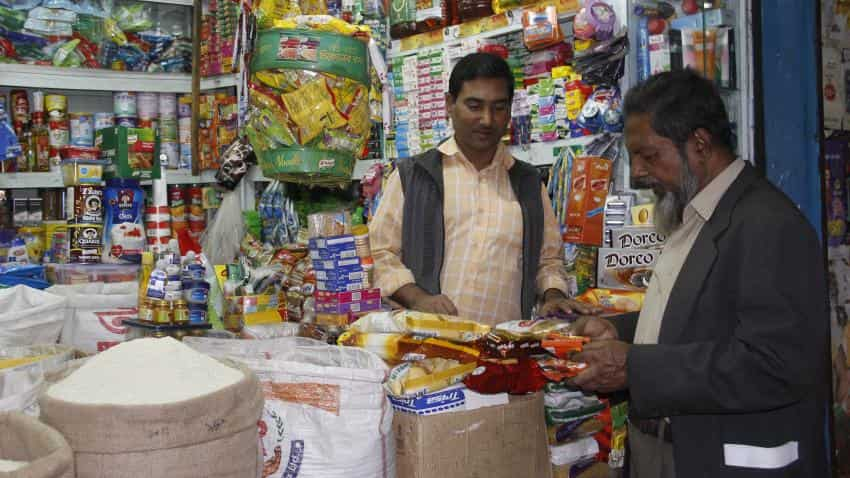After months of drifting apart, India's wholesale and retail inflation are finally converging
Both WPI and CPI have reached to a series low in the month of May 2017 and are now just 1 basis point difference between each other.

Key Highlights:
- CPI, WPI at series low in May 2017
- Difference of 1 basis points between CPI and WPI
- CPI at 2.18% and WPI at 2.17% in May 2017
India's Consumer Price Index (CPI) and Wholesale Price Index (WPI) are now close to meeting each other after months of growing differences.
CPI, in May 2017, stood at 2.18% and WPI in the same month was recorded at 2.17%.
source: tradingeconomics.com
source: tradingeconomics.com
The difference between the two was at its widest in August 2015.

During FY16, the CPI was hovering in the range of 5-5.5%, while WPI was negative throughout the fiscal.
Divergence in these two inflation metrics make for a confusing case for India's policy makers as ideally difference between WPI and CPI should not be more than one percentage point.
As per Sameer Narang and Indranil Pan, analysts, IDFC Bank, the decline in WPI was due to fuel and food indices. While food inflation is a result of lower vegetable and pulses prices, fuel inflation has declined on the back of fall in international oil prices.
Analysts at Angel Broking said, “ A downward trend in CPI inflation and WPI inflation is a good sign for the price levels and the level of sustainable inflation. It means that cost push inflation does not look likely for now and that is good news for CPI inflation too.”
Madhavi Arora, Suvodeep Rakshit and Upasna Bhardwaj analysts at Kotak Institutional Equities said, “The downturn in WPI inflation essentially depicts benign producers’ input prices, which in theory should impact the retail price pressures with a lag.”
While analysts at State Bank of India, “The better and enhanced representation has reduced volatility of new WPI series significantly and brought it close to CPI, which is good signal for policy-makers as by targeting CPI they will automatically be targeting WPI as well.”
RBI expects CPI inflation to range at 2.0-3.5% in the first half and between 3.5% and 4.5% in the second half of 2017-18.
Sachin Jain and Jaimin Desai analysts at ICICI Securities said, "RBI seems to have focused on managing inflation expectation instead of actual number.”
Apart from risk factors arising from wage hike in House rent allowance under the 7th Pay Commission, this time RBI has mentioned the farm loan waiver as risk factor for inflation.
Core Inflation, however, still remains sticky. In May 2017 Core CPI inflation eased to 4.14%, however higher by 5.25% on year-on-year (YoY) and 0.35% on month-on-month basis as per data of Cholamandalam Securities.

Meanwhile core WPI has risen slightly after three months successive decline at 2.06% in May 2017 compared to 1.99% in April and 2.14% in March 2017.

Also Read: What is core inflation and why does it continues to be a problem?
Upside risks to core CPI in the near term could arise from GST implementation and HRA payouts as highlighted by the RBI at its policy meet last month, stated ICICI Securities.
Get Latest Business News, Stock Market Updates and Videos; Check your tax outgo through Income Tax Calculator and save money through our Personal Finance coverage. Check Business Breaking News Live on Zee Business Twitter and Facebook. Subscribe on YouTube.
RECOMMENDED STORIES

SBI 444-day FD vs PNB 400-day FD: Here's what general and senior citizens will get in maturity on Rs 3.5 lakh and 7 lakh investments in special FDs?

Small SIP, Big Impact: Rs 1,111 monthly SIP for 40 years, Rs 11,111 for 20 years or Rs 22,222 for 10 years, which do you think works best?

Rs 3,500 Monthly SIP for 35 years vs Rs 35,000 Monthly SIP for 16 Years: Which can give you higher corpus in long term? See calculations
06:08 PM IST









 RBI: After another status quo year, all eyes on a growth-propping rate cut with new Guv at helm By Ashish Agashe
RBI: After another status quo year, all eyes on a growth-propping rate cut with new Guv at helm By Ashish Agashe UK inflation rises further above Bank of England's target in November
UK inflation rises further above Bank of England's target in November Consumer inflation eases to 5.48% in November, in line with expectations
Consumer inflation eases to 5.48% in November, in line with expectations India's retail inflation likely to ease: Report
India's retail inflation likely to ease: Report Thank you, PM Modi, FM Sitharaman, Team RBI: Shaktikanta Das on his last day in office
Thank you, PM Modi, FM Sitharaman, Team RBI: Shaktikanta Das on his last day in office